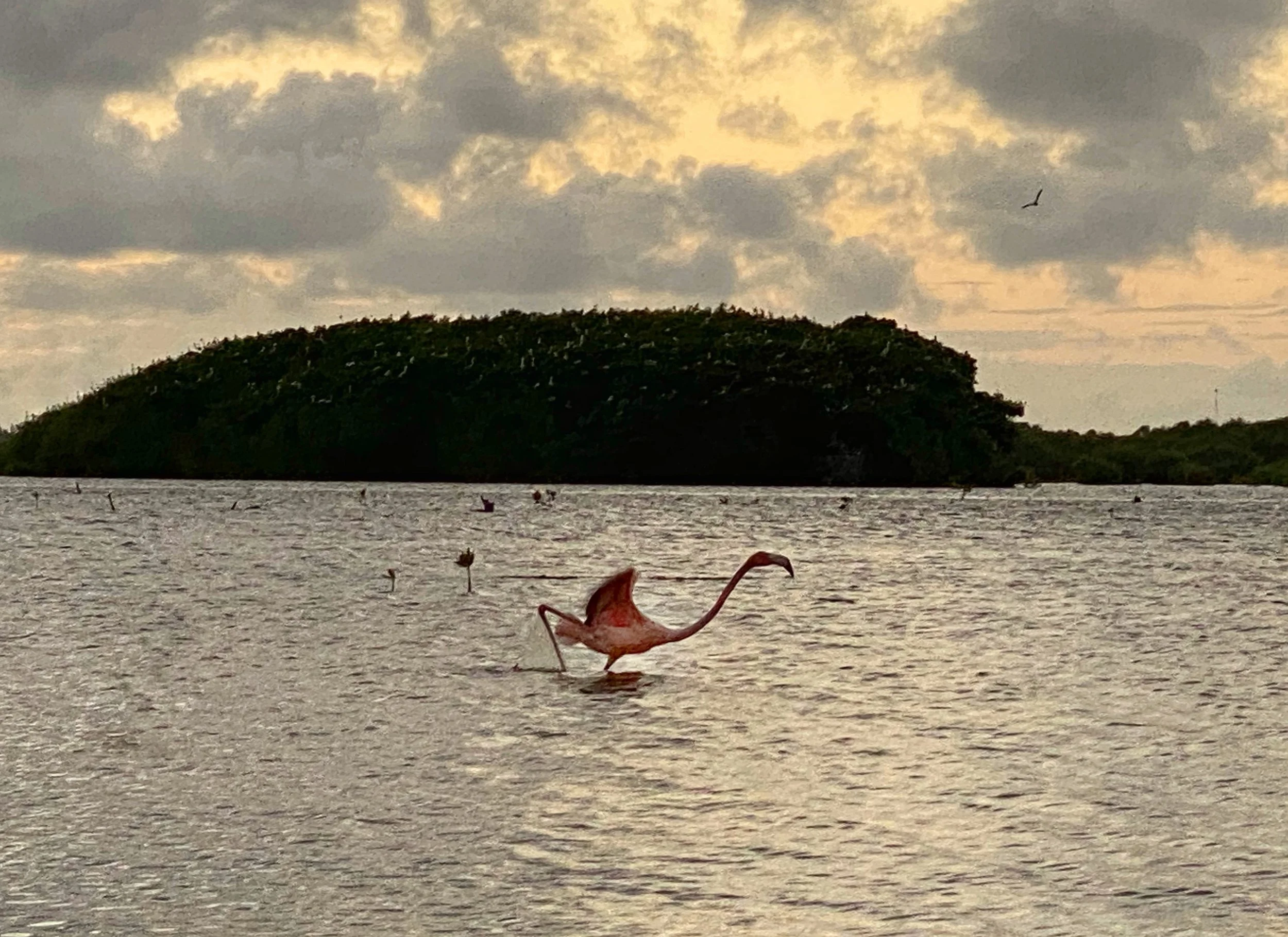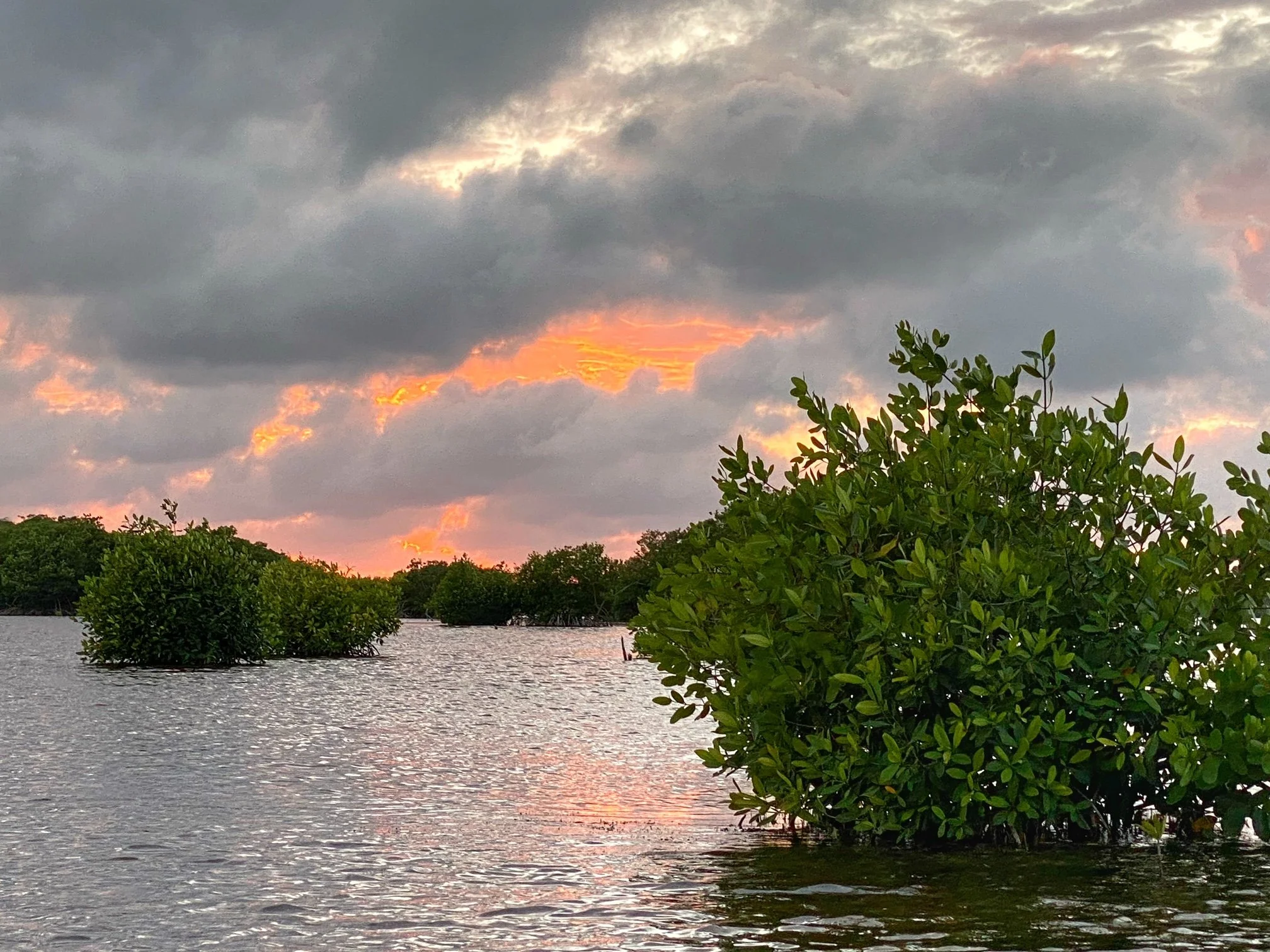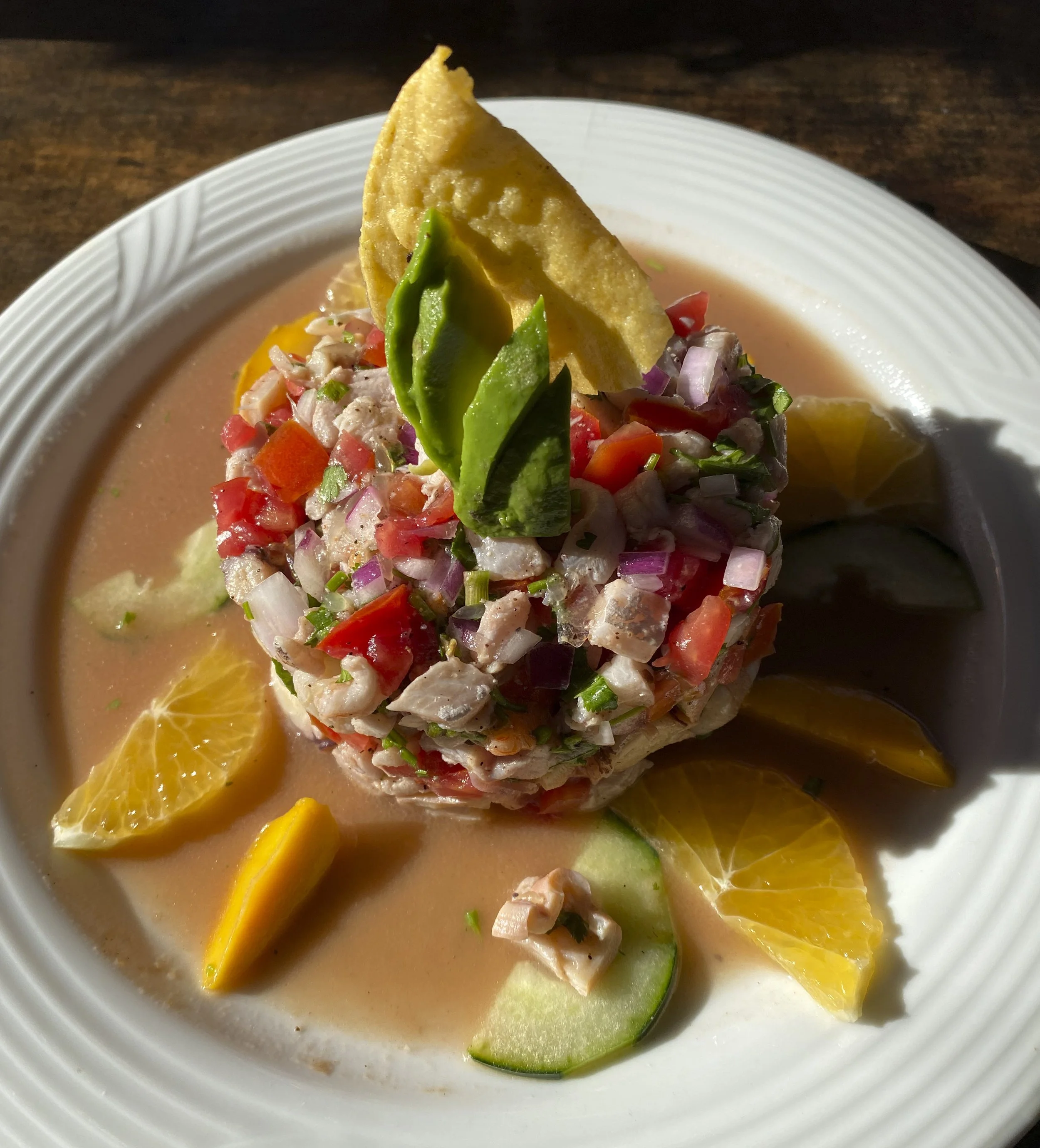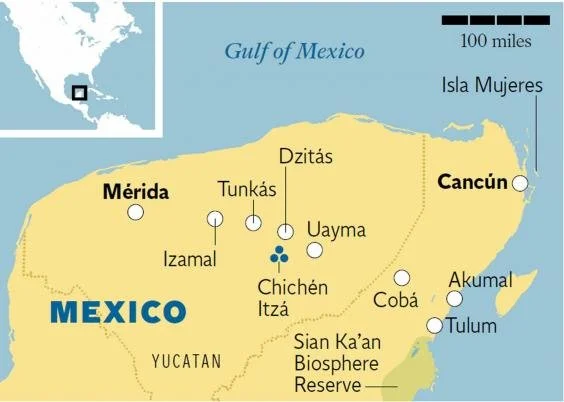The “Other Side” of the Yucatán
red mangroves and flamingo
Having visited Mayan marvels such as Chichen Itza, Uzmal and Tulum decades ago, we wished to head for a few days this winter to a more low-key, less frequented place. While the “other side” of the Yucatán on the Gulf of Mexico —unlike the Caribbean, may not present such well-known archeological sites (although many are still being discovered), it excels in nature’s bounty protected by eco-reserves. Bordering the state of Campeche — and with little or no road access along the coast, it does not suffer from extensive tourist development such as the Mayan Riviera. Protected nature sanctuaries, with their rich red, black and white mangroves, egrets, herons, cormorants, anhingas, crocodiles and flamingos offer diversity. Coastal wetlands provide for a large variety of flora and fauna species to flourish and offer a source for sustainable eco-tourism for the local population. Fishing, including the harvesting of shrimps, remains a mode of subsistence and long white beaches, an added attraction.
baby crocodile
Coastal wetlands, particularly mangroves, are important ecosystems that play crucial environmental roles such as global carbon sequestration. Unfortunately, they, like other wetlands, have been declining worldwide due to human impact. According to Dr. Eduardo Batillori Sampedro: “They are areas of nourishment, shelter and growth of flora and fauna; they act as natural flood control systems, as barriers against hurricanes, control erosion protecting the coasts and improve water quality by acting as biofilters.”
flamingo taking off at sunset in a lagoon
Having dreamt about witnessing flocks of pink and peach flamingos, we headed to sanctuaries that include both the permanent and migratory ones. Below was a small group on the Gulf; others could be seen on lagoons and estuaries with their cocktail of salty and fresh water.


To get there, we took advantage of a new direct flight from Queretaro to the capital of the Yucatán: Mérida. Founded in 1542, and named after the town of Mérida in Extremadura, Spain, it was built on the site of the Maya city of T'hóAn. With its impressive cathedral built in part with stones from destroyed temples, it also became known as the “White City”. Apparently, only those of direct Spanish descent, ie. the peninsular and criollos, were allowed to reside in this walled city due to fear of Mayan reprisals. (The more common version for its name has to do with the white limestone, the bedrock of the Yucatán that also allowed for the formation of cenotes.)
Mérida also boasts of having once enjoyed the highest per capita income in the WORLD, a fact confirmed by Wikipedia. For a brief time, in the early 20th century, huge plantations producing henequén, aka sisal, gave rise to a 1% population of millionaires. Henequén, used for rope and many other products, was exported over the Gulf and Atlantic until plastic fibers took its place. Who could not help but think of the Gilded Age with its over-the-top mansions located on its Fifth Avenue: the Paseo de Montejo, named after its founder of the city?




Back to nature though. To visit the coast, we drove to a town which happens to be called Sisal, (pronounced sea sal). Much to our chagrin however, we never came upon a single sisal plant. Aside from this town with rough and sandy streets and unfortunately, an invasive type of seaweed, called sargazo in Spanish on its white beaches, what awaited was far better.
Our first expedition was by rowboat into a large, brackish coastal intertidal lagoon at sunset. A pearl-colored full moon was awaiting. Our guide, an enthusiastic birder of Korean descent (whose ancestors were conscripted for labor), led us through dense green “tunnels” of tangled mangroves. With their complex system of roots, some seemed to be standing on stilts while others project “breathing roots” like pencils. Often the water is a dark amber color from the red mangroves’ tannins. Coming upon the more open lagoon, we could quietly appreciate the water fowl preparing for the night, a breathtakingly beautiful sunset and the rising of the full moon.
When it comes to flamingos, pink due to their shrimp diet, we witnessed far more in Celestún, a small fishing village southwest of Mérida and bordering the state of Campeche. It is known for the Ría Celestún Biosphere Reserve, with 81,482 protected hectares and 304 species of animals in a variety of habitats. Remaining more on the sea where we saw a few as shown in the photographs above, we barely visited the reserve’s long estuary. With its “cocktail” of salty and fresh water emanating from underground springs it is deal for the proliferation of bird species, both sedentary and migratory. 10,000 flamingos have been counted in this “other sides” peninsula.
After a “Mayan bath” consisting of defoliating one’s skin with fine wet sand and mud, we waded from our small launch into the warm, turquoise water. Here we could explore the ruins of an ancient salt extraction mill.
Above is a portal to inspire our next visit… And below a ceviche I look forward to once again!
A Travel & Leisure piece: https://www.travelandleisure.com/trip-ideas/flamingos-birdwatchers-paradise-celestun-yucatan-mexico. In case you’d like the name of a nice hotel I recommend the BreMar in Celestun.
This map shows the coastal areas I refer to. They are to the north and north west of Merida.








